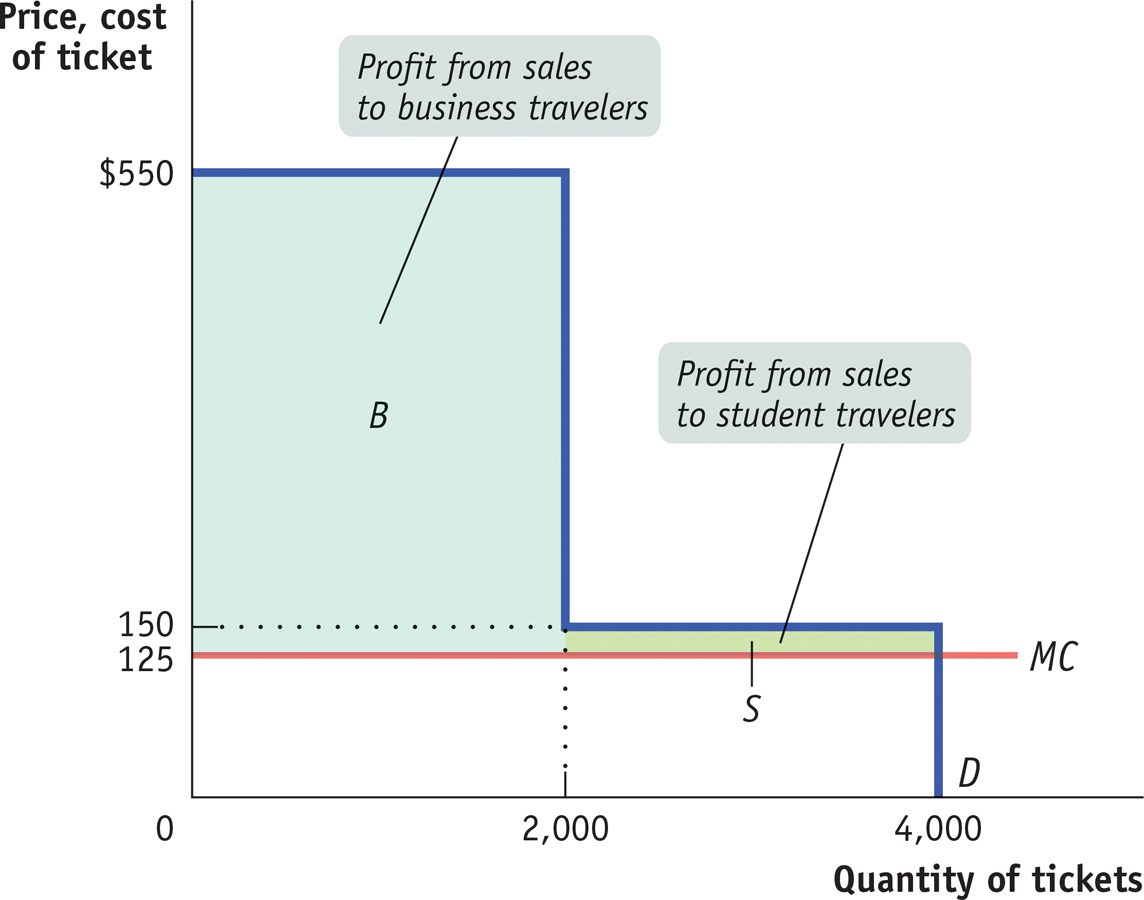The Logic of Price Discrimination
To get a preliminary view of why price discrimination might be more profitable than charging all consumers the same price, imagine that Air Sunshine offers the only nonstop flights between Bismarck, North Dakota, and Ft. Lauderdale, Florida. Assume that there are no capacity problems—
Further assume that the airline knows there are two kinds of potential passengers. First, there are business travelers, 2,000 of whom want to travel between the destinations each week. Second, there are students, 2,000 of whom also want to travel each week.
Will potential passengers take the flight? It depends on the price. The business travelers, it turns out, really need to fly; they will take the plane as long as the price is no more than $550. Since they are flying purely for business, we assume that cutting the price below $550 will not lead to any increase in business travel. The students, however, have less money and more time; if the price goes above $150, they will take the bus. The implied demand curve is shown in Figure 13-11.
13-11
Two Types of Airline Customers

So what should the airline do? If it has to charge everyone the same price, its options are limited. It could charge $550; that way it would get as much as possible out of the business travelers but lose the student market. Or it could charge only $150; that way it would get both types of travelers but would make significantly less money from sales to business travelers.
We can quickly calculate the profits from each of these alternatives. If the airline charged $550, it would sell 2,000 tickets to the business travelers, earning total revenue of 2,000 × $550 = $1.1 million and incurring costs of 2,000 × $125 = $250,000; so its profit would be $850,000, illustrated by the shaded area B in Figure 13-11. If the airline charged only $150, it would sell 4,000 tickets, receiving revenue of 4,000 × $150 = $600,000 and incurring costs of 4,000 × $125 = $500,000; so its profit would be $100,000. If the airline must charge everyone the same price, charging the higher price and forgoing sales to students is clearly more profitable.
What the airline would really like to do, however, is charge the business travelers the full $550 but offer $150 tickets to the students. That’s a lot less than the price paid by business travelers, but it’s still above marginal cost; so if the airline could sell those extra 2,000 tickets to students, it would make an additional $50,000 in profit. That is, it would make a profit equal to the areas B plus S in Figure 13-11.
It would be more realistic to suppose that there is some “give” in the demand of each group: at a price below $550, there would be some increase in business travel; and at a price above $150, some students would still purchase tickets. But this, it turns out, does not do away with the argument for price discrimination.
The important point is that the two groups of consumers differ in their sensitivity to price—that a high price has a larger effect in discouraging purchases by students than by business travelers. As long as different groups of customers respond differently to the price, a monopolist will find that it can capture more consumer surplus and increase its profit by charging them different prices.